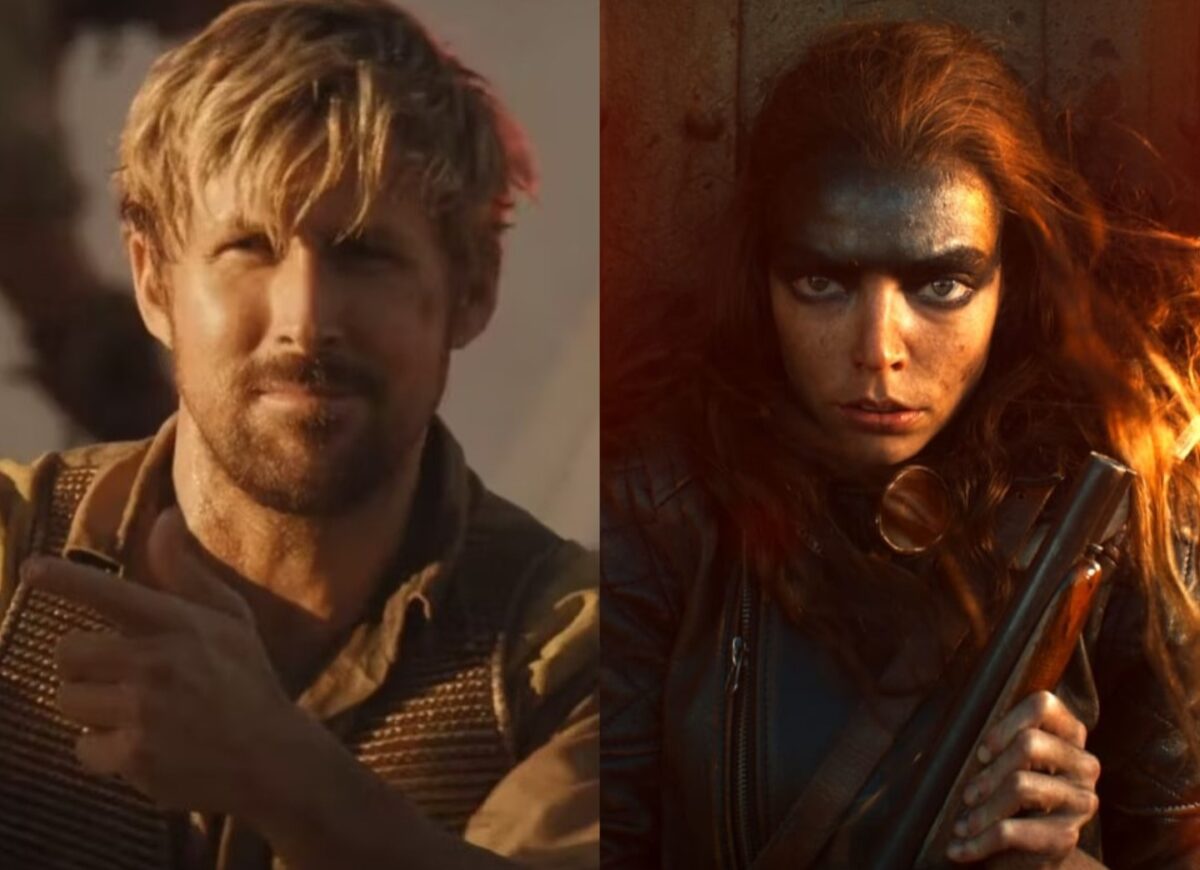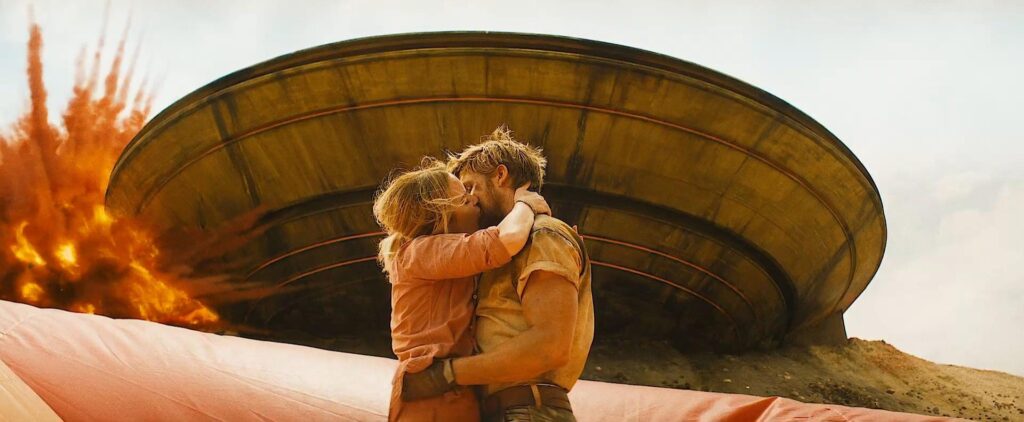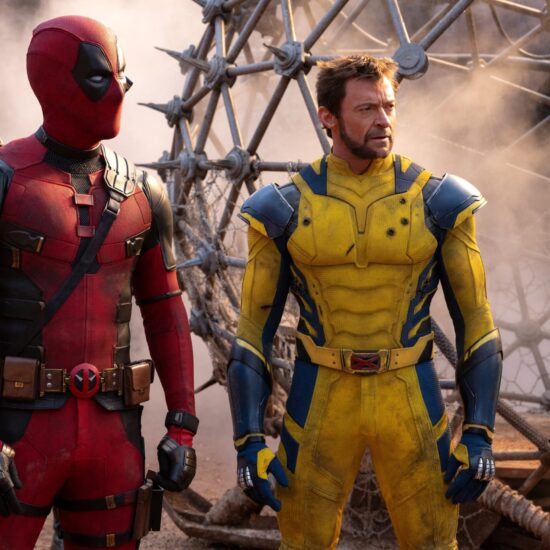
In an era where streaming services offer a buffet of entertainment options from the comfort of one’s home, and the cost of a movie outing continues to climb, the enchantment of cinema is facing unprecedented challenges. However, the struggles facing the movie industry are not just about audience preferences and streaming competition; they’re also influenced by the recent shift in the industry after the unprecedented SAG and WGA strikes regarding residuals for streaming and other matters in 2023. Regardless, streaming services remain more popular than ever and films nationwide continue to take major hits. Films like “The Fall Guy” and “Furiosa: A Mad Max Saga” are feeling the effects of the seismic shifts in Hollywood.
Regardless of budget or promotion films seem to be flailing. Take “The Fall Guy” starring Ryan Gosling and Emily Blunt as a prime example, a film which seemed poised for success with its two a list leads and a blend of romance, action, and mystery. Yet, despite its star power and high projected value of $500 million, the film only ended up making $20 million in its opening weekend. The news that “The Fall Guy” will only be available digitally two weeks after its theatrical debut was the cherry on top of the film’s disappointing box office performance. Despite an incredible marketing campaign that had fans eagerly awaiting its release and all eyes on its cast, a series of entertaining interviews and premieres, the film which was expected to be a blockbuster did not have its desired effect at the cinema. This was in no way due to the humorous and high-stakes story itself.

Courtesy of Universal Pictures
Shortening the gap between cinema releases and streaming might seem like a quick win for studios, but it could spell trouble in the long run. While the temptation to shorten the window between theatrical release and streaming availability may seem financially enticing in the short term, it poses significant long-term risks to the theatrical ecosystem and the overall cinematic experience. So, while it might seem like a good idea to get movies into people’s homes as quickly as possible, studios should think twice before shortening the gap between cinema releases and streaming. It’s about more than just making a quick buck—it’s about preserving the magic of moviegoing for everyone.
Similarly, “Furiosa: A Mad Max Saga”, a highly anticipated prequel to the critically acclaimed “Mad Max: Fury Road”, stumbled at the box office despite its pedigree and captivating narrative. While the film received positive reviews from critics, it failed to resonate with general audiences. Despite its $168 Million budget, “Furiosa” is doing poorly at the Box Office with just a $25 million opening. “Furiosa’s” poor box office performance is linked to the wider issues Hollywood is currently dealing with. With the exception of 2020, when COVID completely closed theatres, “Furiosa” and “The Garfield Movie” have seen the worst Memorial Day weekend in almost 3 decades. This disconnect highlights a broader trend where films, even those with strong brand recognition and built-in fan bases, struggle to capture the attention of general moviegoers amidst a sea of entertainment options. “The Fall Guy” and “Furiosa: A Mad Max Saga”, are not just isolated incidents but symptomatic of deeper shifts in audience behaviour and industry dynamics.
One key factor behind these films’ underperforming at the box office. Audiences are opting to reserve their theatre visits for cinematic spectacles that demand the grandeur of the big screen. The allure of witnessing larger-than-life visuals and immersive experiences, such as hits like “Barbie”, “Oppenheimer” “Dune” and of course superhero films. Theatres do give fans the chance to enjoy the experience of Indie films as well, and when you look at the theatrical release of “Challengers” and how the film was released on demand in one month despite its popularity and success at the box office, you can see how although these films continue to drive ticket sales, films lacking a certain cinematic grandeur struggle to attract audiences away from their living rooms and laptops. In some cases, this in no way reflects the quality of the film itself, but simply the changing preferences of moviegoers. For some people, a movie ticket has become a luxury, as ticket prices continue to rise and audiences choose less expensive home video and streaming options over movie theatres.

Courtesy of Warner Bros. Pictures
However, amidst these challenges, there are still those who choose the cinematic experience every time. For the audiences that choose streaming, therein lies an opportunity for innovation and adaptation. Filmmakers are already delivering captivating, emotional, and intense stories that build new worlds and draw audiences in. Such as the recently released film “IF” from Director and Actor John Krasinski. It is now up to studios to reevaluate their strategies, placing greater emphasis on curating diverse and compelling cinematic experiences that justify the trip to the theatre. Embracing technological advancements, such as immersive formats like IMAX and 4DX to enhance the allure of cinema and differentiate it from the home viewing experience.
Fans have the power to foster a culture of anticipation and word-of-mouth buzz which can reignite excitement around any theatrical releases. By prioritizing fans and their important role in helping market the film, studios are fostering connections with your audience through storytelling and bold artistic visions. Studios must remind audiences of its enduring power to captivate and inspire by ensuring that the magic of cinema continues to thrive in the years to come.
In an Era where you can simply watch whatever you like at home for free, what is it that should make audiences want to go to the cinema? The one of a kind immersive experience of enjoying a film with family and friends that your laptop, TV or mobile device simply cannot provide. By shaking things up and giving audiences a reason to get off their couches, studios can keep the magic of cinema alive for generations to come.
Fangirl and Writer with a huge passion for entertainment.














